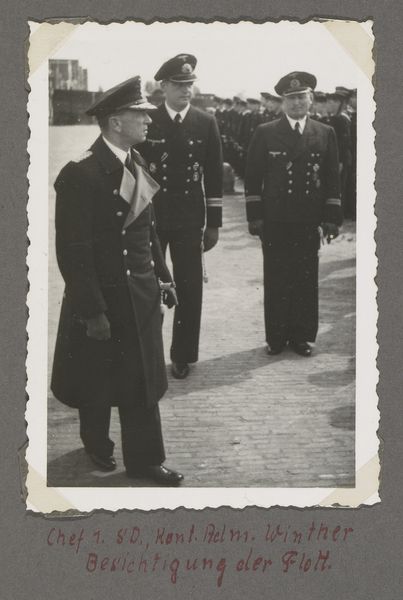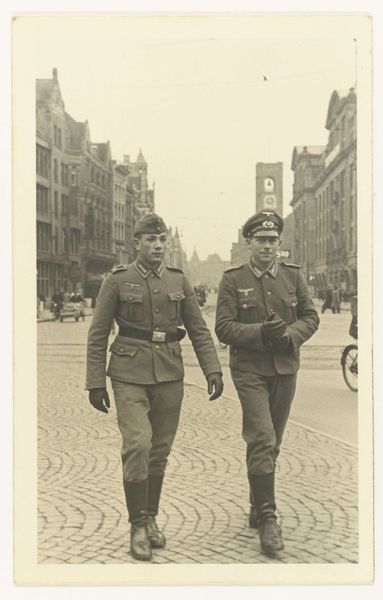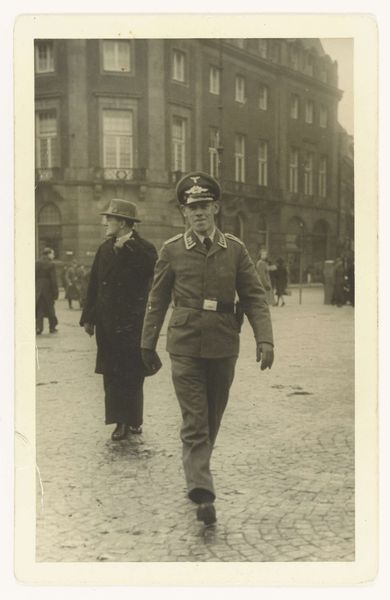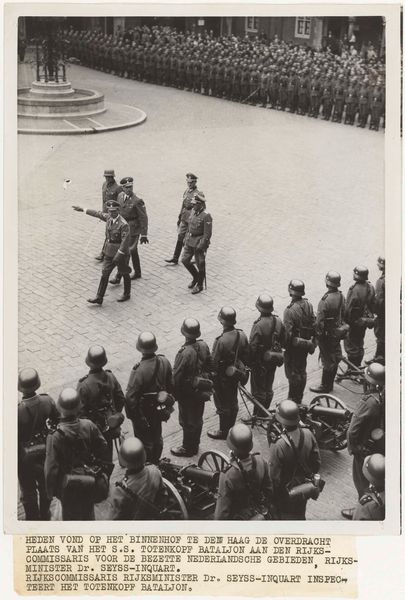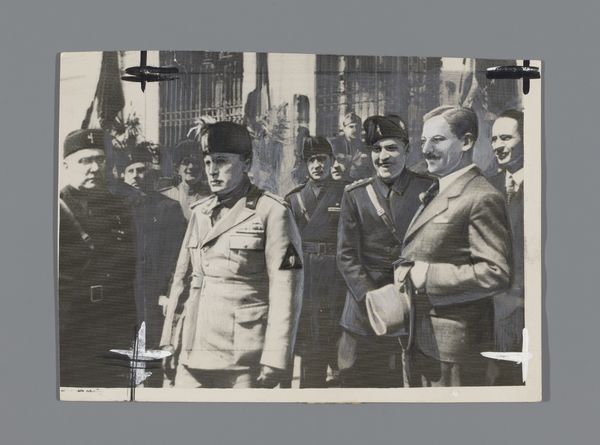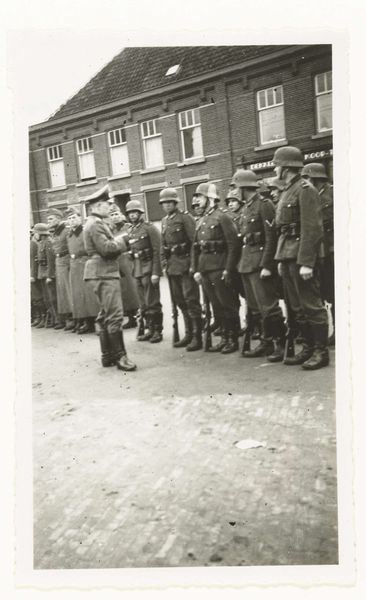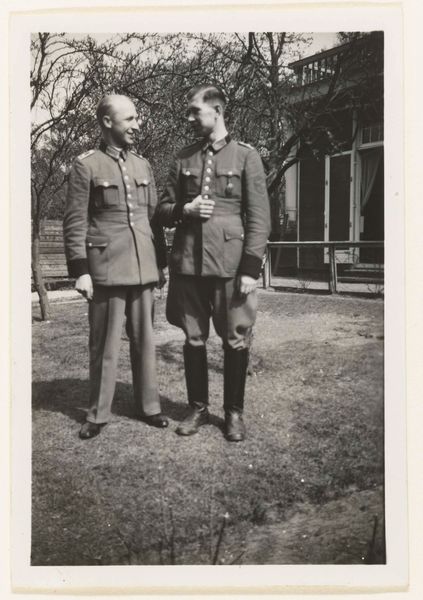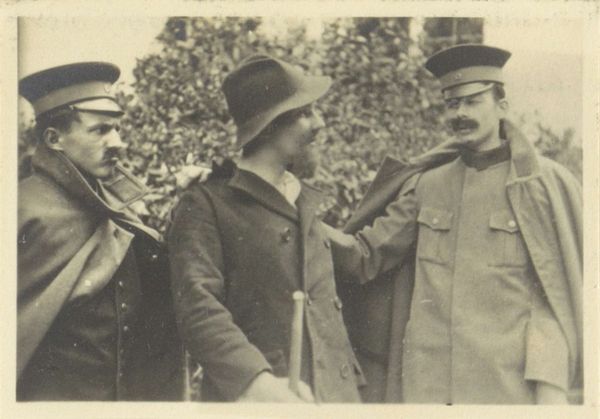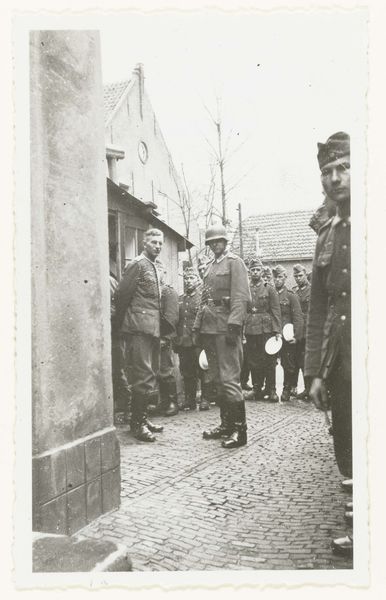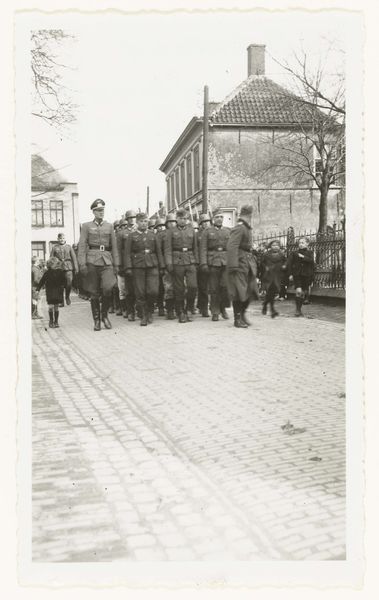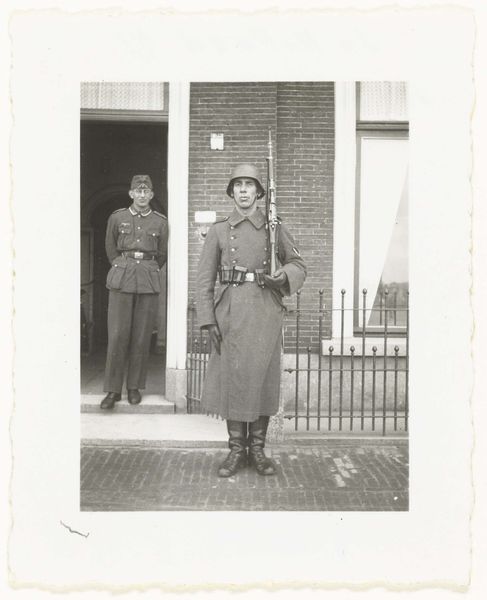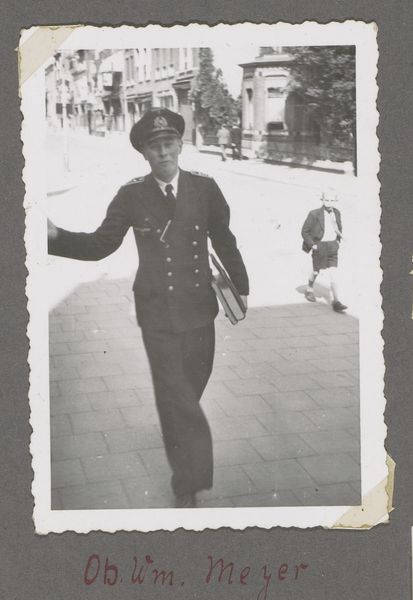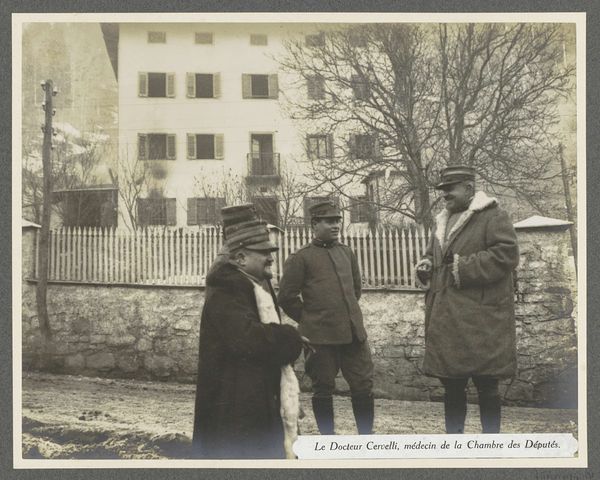
Een Wehrmachtsoldaat, een lid van de Kriegsmarine en een lid van de Luftwaffe 1941
0:00
0:00
Dimensions: height 14 cm, width 9 cm
Copyright: Rijks Museum: Open Domain
Editor: Here we have "Een Wehrmachtsoldaat, een lid van de Kriegsmarine en een lid van de Luftwaffe," taken by Foto Atelier in 1941. It’s a gelatin-silver print. The photograph has a rather somber quality to it, capturing these figures during wartime. What strikes you when you look at it? Curator: I'm drawn to how the very materiality of this gelatin-silver print speaks to the mechanisms of wartime propaganda. Consider the studio, the Foto Atelier – likely commissioned or incentivized to produce images that normalize the occupation. The printing process itself, reproducible and easily disseminated, became a tool for constructing a specific image of power and control. Notice how the different uniforms indicate the separate branches, yet they’re presented uniformly as a unified force. Editor: That's interesting. So you’re saying the process is integral to understanding the picture itself? Curator: Absolutely. It’s not just a snapshot of three soldiers. It’s a carefully constructed artifact designed to project an image. The control exerted isn't just military; it’s also over representation itself. Think about the accessibility of photography at this time; who could afford it, and whose stories were being told versus suppressed? What kind of labour went into this print, from production to distribution? Editor: So, we need to look beyond just *what* is depicted to *how* it was made and distributed to understand its true message? Curator: Precisely. This photograph's power lies not just in the subjects, but also in the entire chain of production and consumption tied into the image. We can use it to understand the very economic and social systems that perpetuate the construction of wartime narratives. Editor: This has given me so much to think about – seeing the image not just as a portrait, but as a manufactured object, is really insightful. Curator: Indeed! Thinking materially opens avenues into how such works are involved in larger cultural and economic practices.
Comments
No comments
Be the first to comment and join the conversation on the ultimate creative platform.
